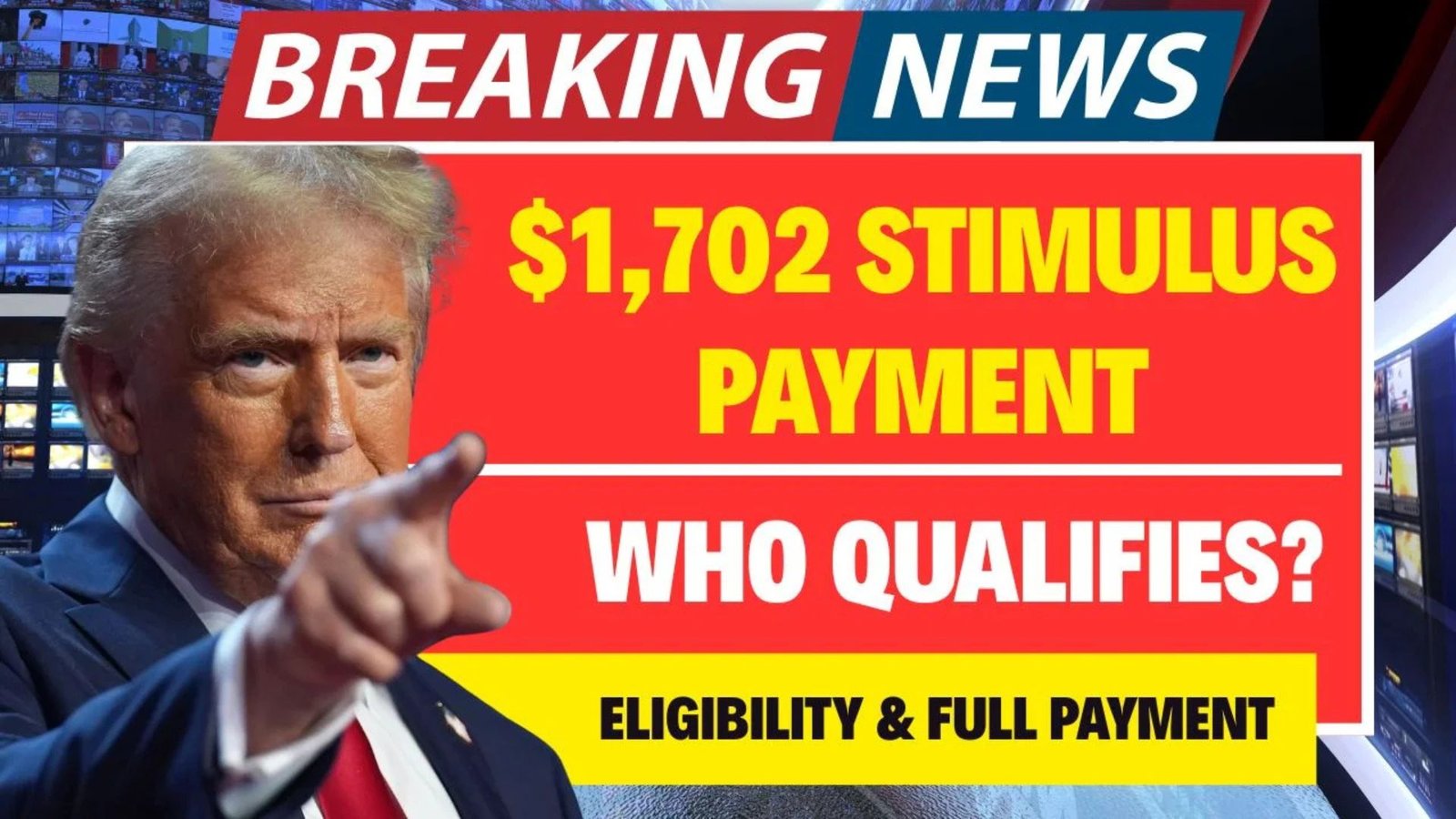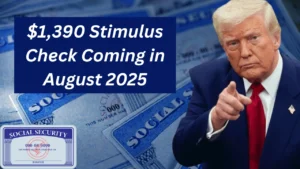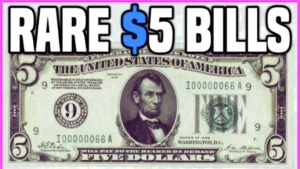Are you wondering how to get the $1,702 stimulus payment? This guide breaks down everything you need to know in simple terms, including who qualifies, how to apply, and important deadlines. Whether you’re a taxpayer, retiree, or someone receiving benefits, this article will walk you through the process step by step to ensure you don’t miss out.
What Is the $1,702 Stimulus Payment?
The $1,702 stimulus payment is a financial relief program designed to help eligible Americans cover essential expenses during tough economic times. It’s part of a government initiative to support individuals and families, including low-income households, seniors, and people receiving certain federal benefits. The payment aims to ease financial burdens and boost economic stability.
Who Qualifies for the Stimulus Payment?
To receive the $1,702 stimulus payment, you must meet specific eligibility criteria. Here’s a clear breakdown:
- Taxpayers: Individuals who filed a 2024 or 2025 federal tax return and meet income requirements.
- Income Limits:
- Single filers: Adjusted gross income (AGI) under $75,000.
- Married couples filing jointly: AGI under $150,000.
- Head of household: AGI under $112,500.
- Beneficiaries: People receiving Social Security, Supplemental Security Income (SSI), or Veterans Affairs (VA) benefits.
- Dependents: Those with qualifying dependents (e.g., children under 17) may receive additional payments.
- Residency: You must be a U.S. citizen or resident alien with a valid Social Security number.
If you’re unsure about your eligibility, check with the IRS website or consult a tax professional.
How to Apply for the $1,702 Stimulus Payment
Applying for the stimulus payment is straightforward, but you need to follow the correct steps to ensure you receive it. Below is a step-by-step guide:
Step 1: Verify Your Eligibility
Confirm that you meet the income, residency, and other requirements listed above. If you’re a non-filer (someone who doesn’t file taxes), you may still qualify through benefit programs.
Step 2: File Your Tax Return
If you’re a taxpayer, file your 2024 or 2025 federal tax return. The IRS uses your tax return to determine eligibility and calculate your payment. Use tax software or a tax professional for accuracy.
Step 3: Update Your Information
Ensure your banking details are updated with the IRS for direct deposit. You can do this through the IRS’s online portal. If you don’t have a bank account, you’ll receive a paper check or debit card by mail.
Step 4: Check for Benefit-Based Payments
If you receive Social Security, SSI, or VA benefits, you may automatically qualify. The IRS coordinates with these agencies to send payments, so ensure your details are current.
Step 5: Submit Non-Filer Information
Non-filers can use the IRS’s Non-Filer Tool (available on their website) to submit basic information, such as name, address, and dependents, to claim the payment.
Step 6: Track Your Payment
Use the IRS’s “Get My Payment” tool to check the status of your stimulus payment. This tool shows whether your payment has been processed and when it will arrive.
Important Deadlines to Remember
Missing deadlines could delay or prevent you from receiving the $1,702 stimulus payment. Here’s a table summarizing key dates:
| Task | Deadline |
|---|---|
| File 2024 Tax Return | April 15, 2025 |
| Update Banking Information | December 31, 2025 |
| Non-Filer Tool Submission | October 15, 2025 |
| Claim Missing Payment (Recovery Rebate Credit) | April 15, 2026 |
Always double-check deadlines on the IRS website, as they may change based on program updates.
Tips to Maximize Your Stimulus Payment
To ensure you get the full $1,702 payment and avoid issues, follow these tips:
- File Taxes Early: Submitting your tax return early helps you avoid delays during peak tax season.
- Double-Check Eligibility: Confirm your income and dependent status to ensure you qualify for the maximum amount.
- Keep Records Updated: Update your address and banking details with the IRS to avoid payment delays.
- Beware of Scams: Only use official IRS tools and websites. Never share personal information with unsolicited callers or emails claiming to offer stimulus help.
Common Mistakes to Avoid
Here are some pitfalls to watch out for:
- Missing Deadlines: Failing to file taxes or submit non-filer information on time can delay your payment.
- Incorrect Banking Info: Outdated bank details may result in a lost or delayed payment.
- Ignoring Eligibility Rules: Not understanding income limits or dependent rules could lead to a reduced payment or rejection.
Frequently Asked Questions (FAQs)
Who is eligible for the $1,702 stimulus payment?
Anyone with an AGI below the income limits ($75,000 for singles, $150,000 for couples) or those receiving Social Security, SSI, or VA benefits may qualify. You must also be a U.S. citizen or resident alien with a valid Social Security number.
How will I receive my stimulus payment?
Payments are sent via direct deposit, paper check, or debit card, depending on the information the IRS has on file. Direct deposit is the fastest method.
What if I didn’t file taxes in 2024?
Non-filers can use the IRS Non-Filer Tool to submit their information and claim the payment. This is especially important for benefit recipients who don’t file taxes.
Can I claim the payment if I missed it?
Yes, if you miss the payment, you can claim it as a Recovery Rebate Credit when filing your 2025 tax return by April 15, 2026.
How do I track my payment?
Use the IRS’s “Get My Payment” tool on their official website to check the status of your stimulus payment.
Conclusion
The $1,702 stimulus payment is a valuable opportunity to ease financial stress, but you need to act quickly and follow the right steps to secure it. By verifying your eligibility, filing taxes or submitting non-filer information, and keeping your details updated, you can ensure a smooth process. Don’t forget to mark the key deadlines on your calendar and use official IRS tools to avoid scams. If you have more questions, visit the IRS website or consult a trusted tax professional for personalized advice.




